Porto to Gibraltar – Round 2

Two weeks ago in conjunction with the Easter Holiday, we flew to Porto with plans to sail Shearwater to Gibraltar where she would meet up with a SevenStar yacht transport ship to make her way to Florida. Unfortunately, the weather gods did not get the message that spring had arrived, and a strong south wind and rain kept us in, or close to, Porto for 3 days, where after looking at the forecast for the rest of the week, we hopped back on a Ryan Air flight and returned to Madrid. It took 2 weeks for the weather to clear, but eventually a powerful low that had brought snow to the US and 40 foot waves to the mid-Atlantic came ashore in southern Portugal and encouraged strong northerlies behind it. We watched all the weather models I could find, even two ensemble models, for over a week before becoming convinced that yes, the northerlies would show, and we should have a wide weather window to get down to Gibraltar.
Arriving back to Porto on Thursday night, we were greeted with the long-lost sun and a gentle breeze in the harbor. Big changes from 2 weeks prior. The river entrance, which had been closed to all vessels since we were last there finally opened overnight, making Friday morning the right time, and the first time, we could depart. We headed down the Rio Douro to the Atlantic just at sunrise and found a quiet sea outside and 10-15 knots of northerly wind.
The sun promised to make a lengthy appearance all day as well. Things were definitely looking up for a fast and enjoyable 3 day passage to Gibraltar. That began to change a little just minutes after clearing the breakwater.
Within 60 minutes we had a steady 30 knots from astern and a steep, but not overly high sea running, mostly from the north, but occasionally from the northwest. Under a single reef and no jib, Shearwater was making 8-9 knots over the water and a 0.5 knot more over ground with a favorable current. We were indeed flying south, but winds, forecast to be 25-30 for the daylight hours, were now gusting to the high 30’s. It was definitely sporty, but not worrisome.
We saw 36 knots and then 38 knots briefly before…nothing (or rather “FAIL” appeared on the instruments where the wind speed and direction numbers had shown up). No wind speed, no air temperature, and no wind direction. We quickly started discussing the wiring of the masthead anemometer that provides this information and decided it would be very unlikely that the connection would have just suddenly broken as the only connection is in a secure closet down below. A peek at the top of mast revealed the situation. The masthead anemometer was simply gone. Gone to the sea without a trace it seems. I had just looked up there, not 5 minutes before, and made a mental note of the anemometer’s presence, with nothing out of the ordinary, but now there was just empty space. Losing the wind speed, wind direction, and air temperature was not critical, only inconvenient. We now didn’t know what the high gusts were, although given the 36 & 38 knot gusts we saw just before the anemometer departed, it is safe to say we saw gusts to 45 knots later in the day. The real inconvenience is that the analog wind direction instrument under the dodger is so much easier to read than craning your neck up to the top of the mast, and when you are surfing down big waves with the wind right on the stern, it is really important to know the wind direction to avoid an accidental jibe. We got used to it though, over the next 3 days.
By mid-afternoon the breeze was full-on with no let up, and the seas had gotten bigger. We were regularly surfing at 10-11 knots with spray shooting up both sides of the hull like a powerboat. It was mostly quite fun. I hand steered for several hours just for the experience and to align with the waves to maximize the surfing and minimizing the rolling. When I got tired I switched over to the autopilot, which had no trouble steering, but it just wasn’t as clever about where we went relative to the seas and cross-seas. Chris even took a turn at the helm and spent an hour keeping the boat pointed the best direction and doing her own surfs over 10 knots. We are pretty sure this is the first time she has ever steered a boat over 10 knots and a great experience for her as well. By evening our best surf was 12.96 knots, we’d only rounded up twice, dipping the boom into the water, and tossing a water bottle and thermos into the sea. Because the seas were quite steep, there were a number of times where some steering was required to keep from surfing straight into the backside of the wave ahead, but one time when we’d barely started surfing, we were already into the wave ahead and just plowed straight into it, bringing a wall of water the height of the dodger sweeping across the deck, fortunately the water hit the dodger and just exploded, leaving us relatively dry in the cockpit.
It was tiring though. We didn’t eat much. Going below turned our stomachs within moments. Before nightfall we needed to make some changes so we could relax and rest more. We wrestled down the main and rolled out just 5’ or so of the jib before dark. That changed the situation completely. We were now only making 6-8 knots, but the motion was better, the boat had no tendency to round up, making steering much easier, and we were able to leave Nikki, the autopilot, to it for the whole night. We passed Lisbon in the early hours, having made 107nm in the first 12 hours. It was cold at night though. The air temperature was in the mid-40’s and even with our new offshore foul weather gear (fantastic for keeping us dry) and multiple layers underneath, 30 knots straight up the stern rendered the dodger useless for wind protection and made for a chilly night.
By Saturday morning the wind, as forecast, had definitely started to ease off, and the seas had become downright comfortable. We spent the early morning alternately getting some much needed sleep and by noon we were under full sail again in 15-20 knots, still making 8-9 knots, but across a smooth sea. It was almost as fast as the day before, but on a completely different scale of comfort.
During Chris’s watch, see had a migrant visitor. Likely crossing the sea from Africa, the strong northerly winds probably made the trip tougher than this little guy expected. The bird is a Hoopoe and migrates back and forth between Europe and Africa with the seasons.
He/she caught a breather on the boom vang and then the winch before shoving off again to make the European coast just a few miles further on. I bet they made it.
We rounded the southwest corner of Portugal just at sunset, turned left, and reaped the benefits of the protection of the land, making the seas even smoother still. That was really nice sailing. A rare flat water sail for Shearwater, made even better because the phosphorescence was incredible. The best and brightest I’d ever seen. Our wake literally glowed green and when the dolphins paid us a visit you could see them streaking under our boat, back and forth, zooming ahead, circling around, and then racing off away from the boat. Just amazing to see what they are up to underwater in the middle of night.
Sunday brought lighter winds, but we managed to keep moving on a close reach around 6 knots for most of the morning until the wind eased even more and we started to motor sail, eager to finish this minor adventure off before the weather turned again. We arrived at the west entrance to Gibraltar Strait just as the sun set and we weren’t disappointed by the amount of shipping traffic. Several times during the night we could count more than 10 ships on AIS. No issues though.
We hugged the Spanish Coast, staying well north of the shipping lanes, and the ships passed by to the south. I was fascinated by the Straits, because after being out on the ocean for 3 days, the Straits seemed positively narrow, especially with the both the European and African coastlines lit up and easily visible. It was a pretty cool feeling, thinking about all the boats that had gone before us over the centuries in and out of Gibraltar Strait.
Arriving in Gibraltar in the middle of the night is no problem. The area is lit up like a Christmas tree with ships refueling and shoreside city life. There was one hiccup in our plan. The marina we planned to stay at was physically closed at night. They put an oil boom across the small entrance at night (the hazards of ships refueling nearby), and it was not possible to enter. We ended up tying to the fuel dock at 2:30am. Within minutes of tying up we were both down for the count. The 460nm trip took less than 3 days, but we had slept only a handful of hours while underway.
Gibraltar seems amazing to me, but it ended being a brief whirlwind. We were circling outside the marina entrance at 8:30am waiting from the oil boom to be removed, then we spent the next few hours stripping and cleaning Shearwater before hopping a taxi to Spain to catch the high speed train back to Madrid. Shearwater is now correctly located and awaiting the SevenStar ship that will take her to Florida in the next few weeks.
That means our next adventure will be the Florida Keys! Quite the contrast it will be from the cold North Atlantic.
Sign up to receive blog updates
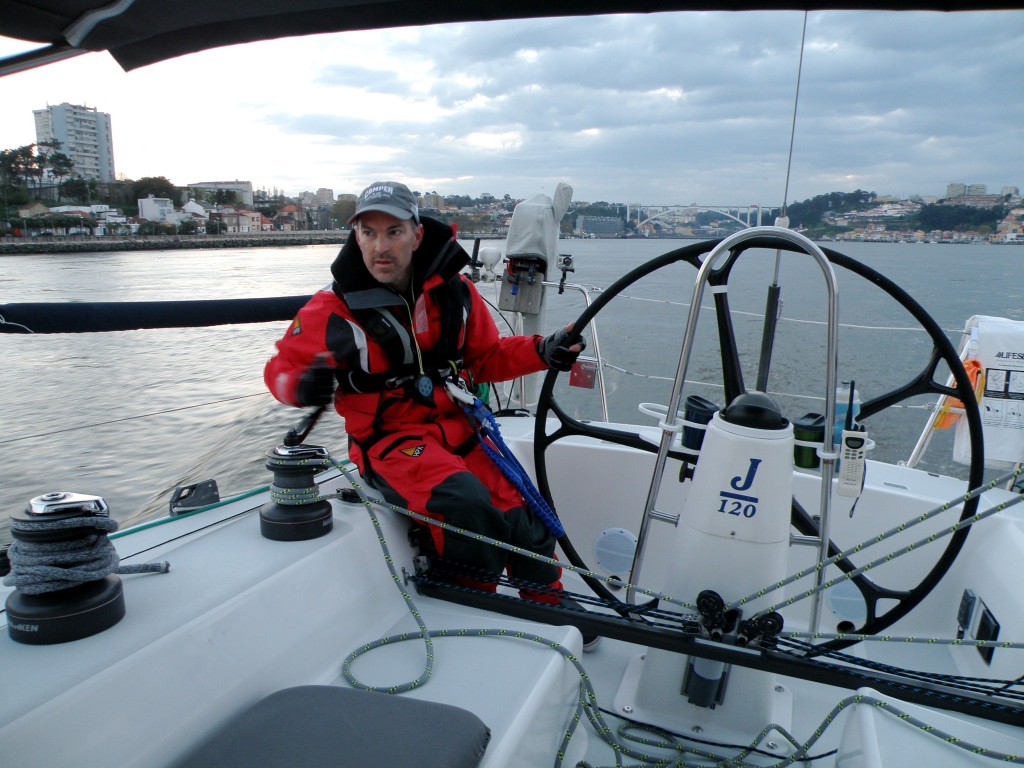
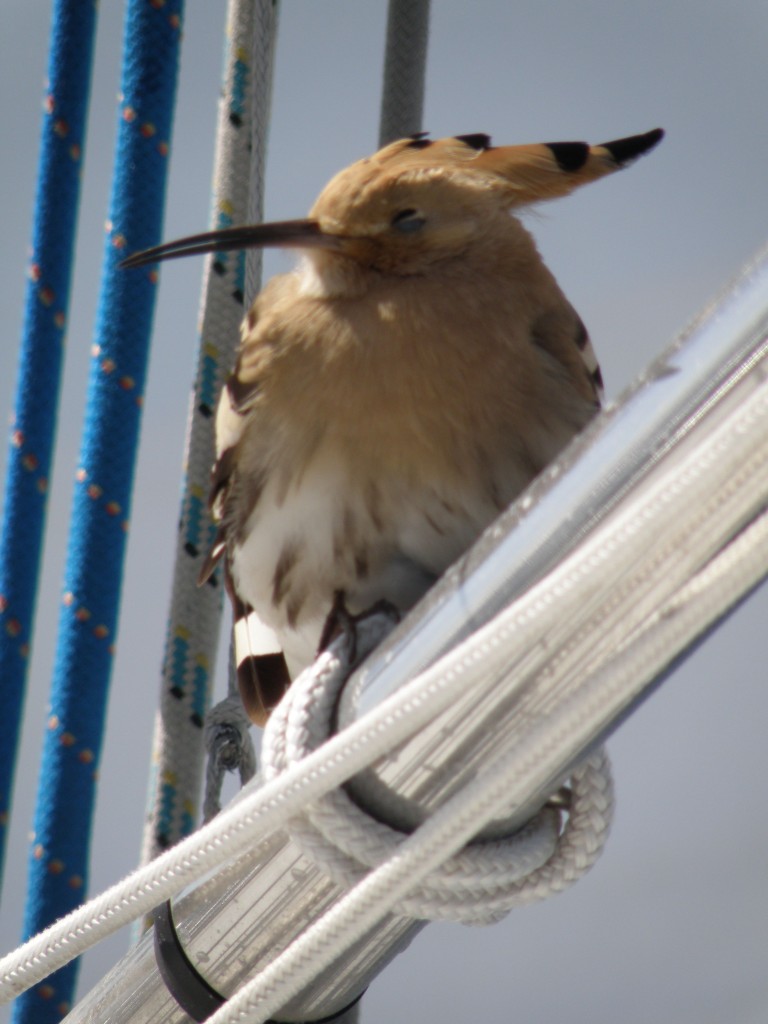
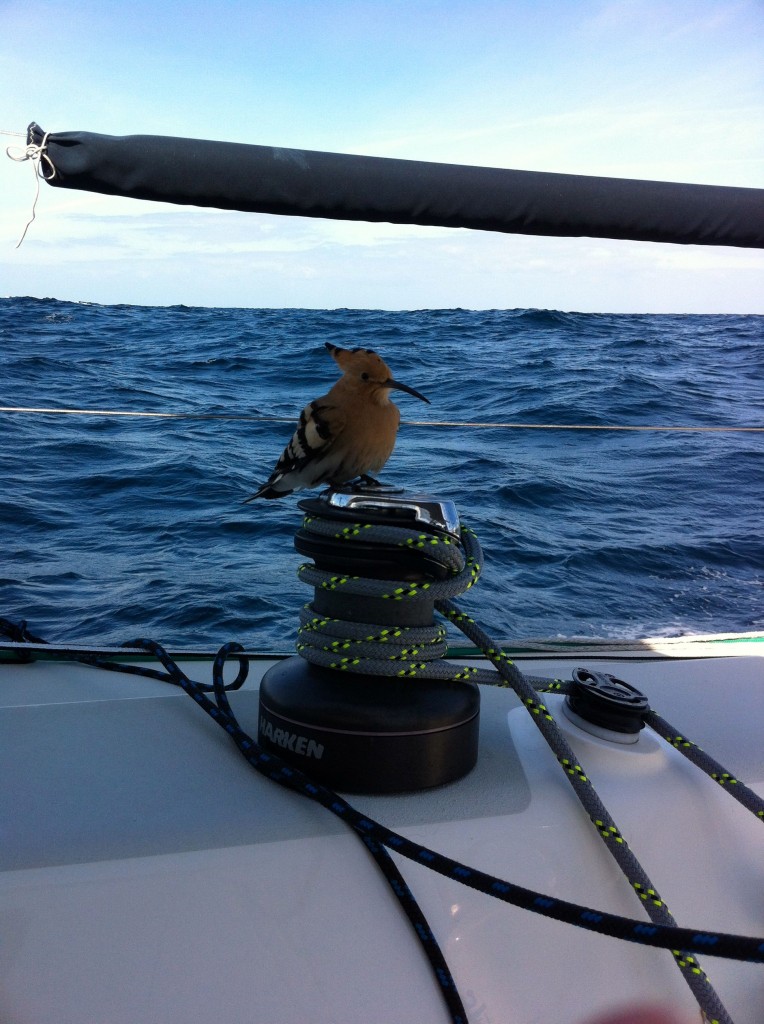

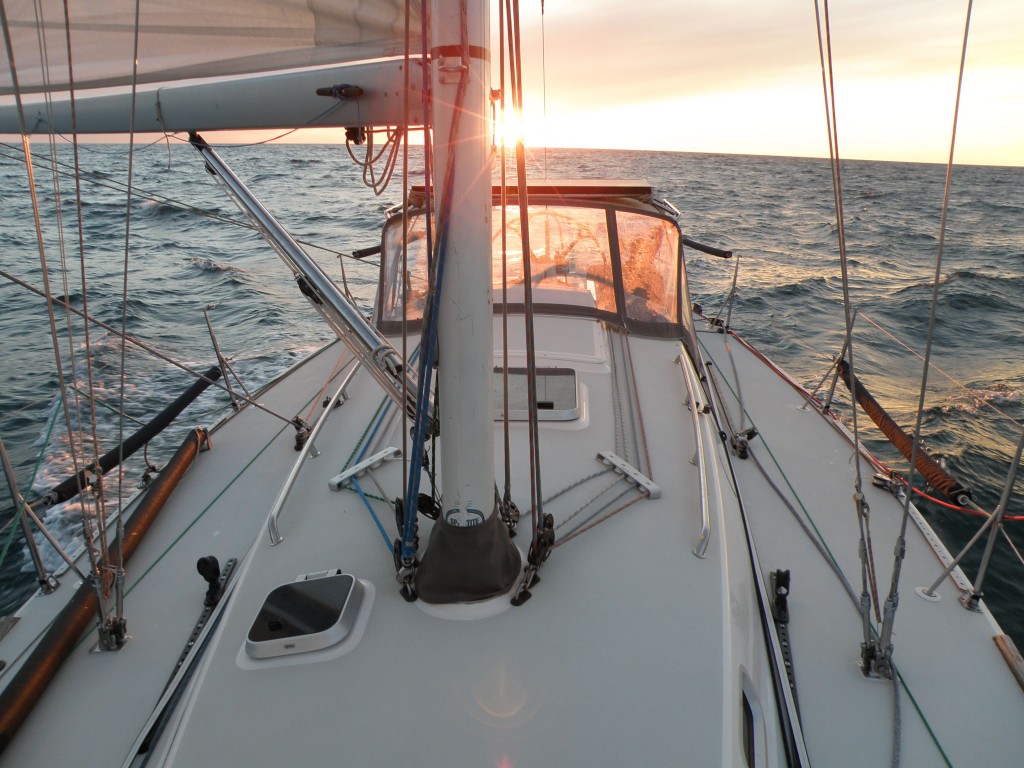
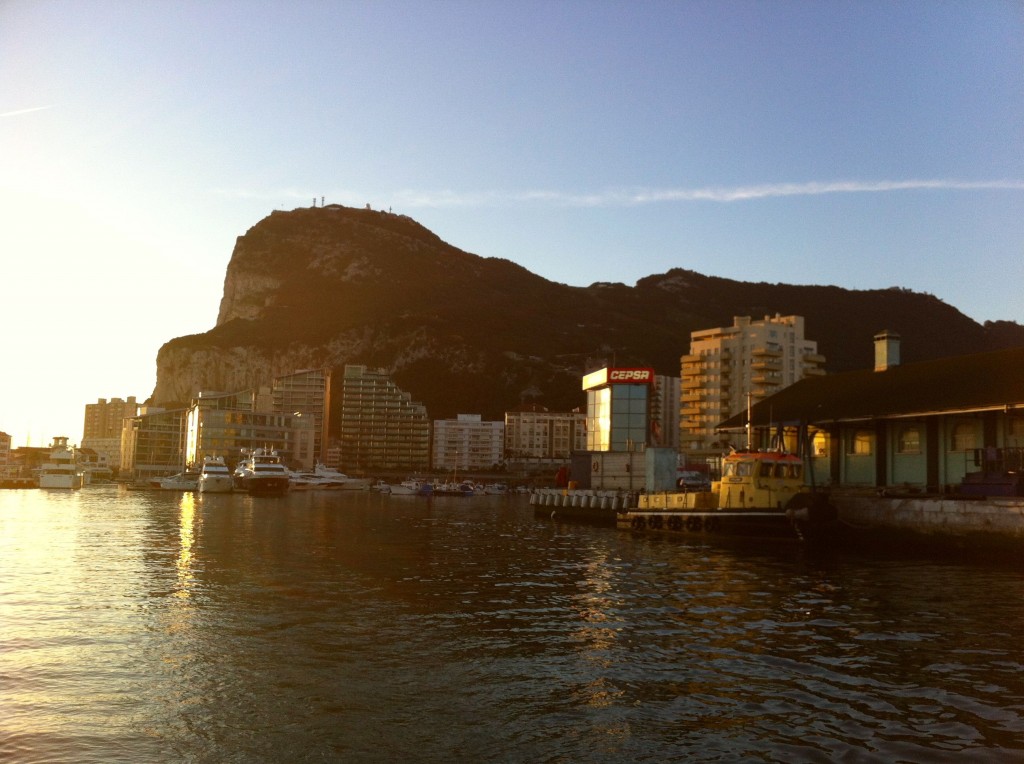
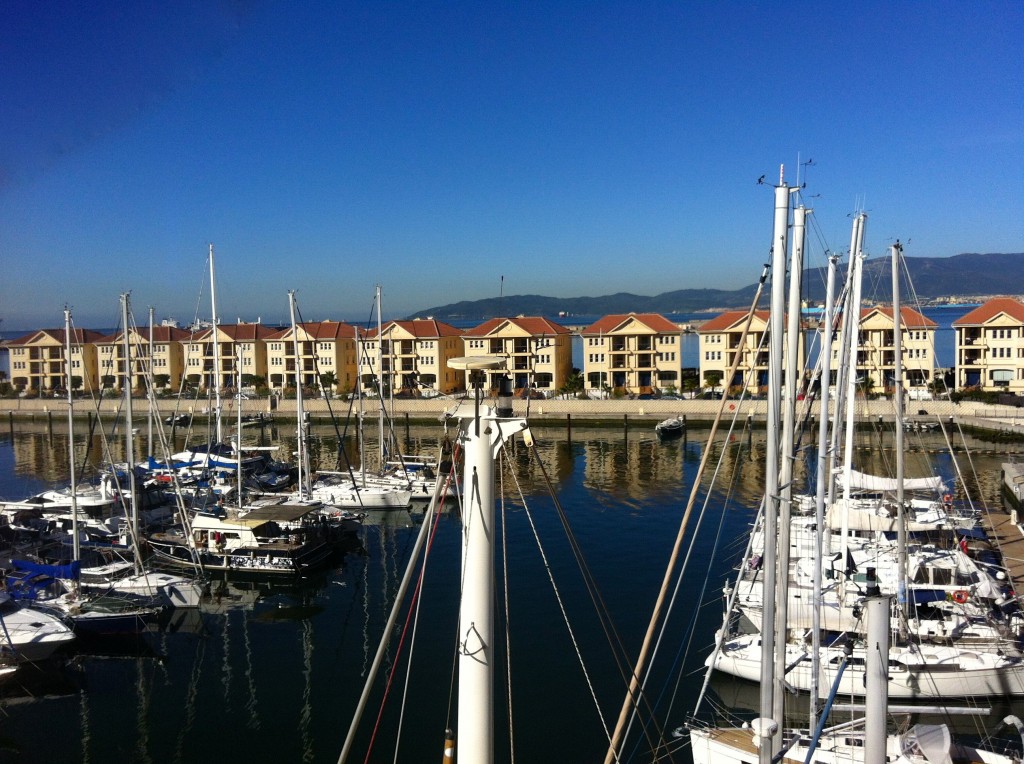
Leave a Reply